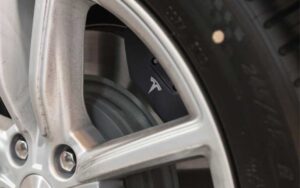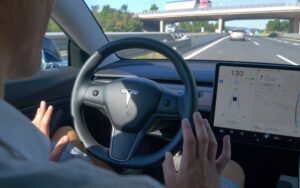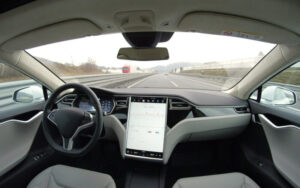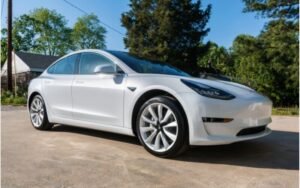Replace Tesla 12V Battery: The Ultimate Guide!
Batteries often serve as the life source of electric vehicles such as Tesla. While this life source ensures the smooth running of your vehicle, it can deteriorate over time due to wear and tear.
Hence, when your car begins to slow down constantly, it’s a huge sign that your Tesla 12V battery needs immediate replacement.
However, how exactly can you replace your Tesla 12V battery successfully? Let’s find out!
To begin with, you’ll need a 10 mm ratchet and a 12V lithium ion or lead acid battery. Once you get these tools, you must follow the correct procedures to replace your old Tesla 12V battery with a new one.
This article will guide you through the step-by-step procedures for replacing your Tesla 12V battery and much more.
How to Replace a Tesla 12V Battery: A Step-by-Step Guide?
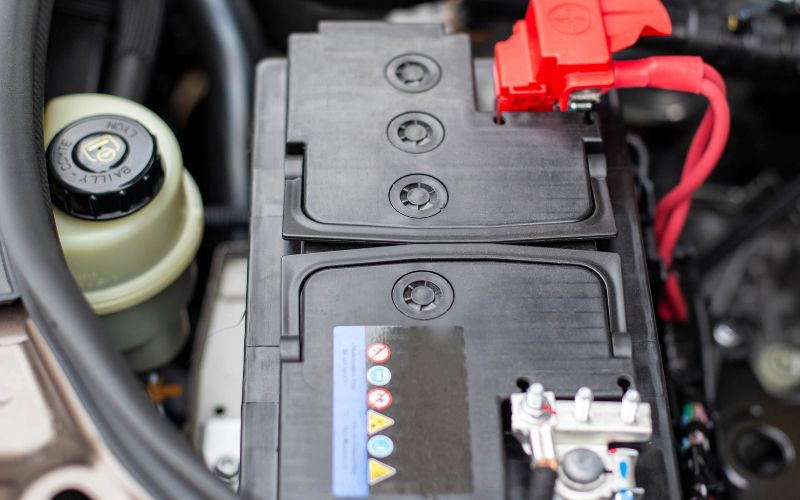
Tesla vehicles are highly efficient and run smoothly due to their high-quality internal components, especially the 12V battery.
Although the battery’s capacity is top-notch, it can malfunction over time due to an accident or wear and tear.
To get your Tesla up and running, immediately replace the old 12V battery with a new one.
Replacing your Tesla 12V battery is easy; you can purchase a 10 mm ratchet and a new lithium-ion or lead acid battery.
Once these tools are in your possession, you can proceed with the procedures for replacing the battery.
Without further ado, below is a step-by-step guide for replacing your Tesla 12V battery.
#1. Turn Off Your Tesla
It’s crucial to power/turn off your Tesla before carrying out the battery replacement.
Plus, you must open the doors and windows of your vehicle for proper ventilation and a conducive working environment to avoid unforeseen circumstances.
#2. Disconnect/Detach Your High Voltage
You must disconnect your high voltage to prevent electrocution while replacing the battery. You can easily find your high-voltage cord under your back seats.
You can open your back seats and extract the plastic cover protecting the high voltage. You’ll find a thick black high-voltage cord with a silver attachment there.
It’s safe to disconnect your high voltage by pulling out the cord. This way, you can work safely and smoothly.
#3. Open Your Car Hood
Once you open the hood, remove the plastic cover close to your windshield and pull off the air vent in your vehicle on your passenger’s side.
This will give you more access to the car battery.
#4. Remove the Bolts on Your Battery Brackets
Tesla batteries usually have essential bolts that help to keep the batteries in place. Hence, extracting the bolts connected to your battery’s brackets is best.
Start by extracting the bolts on the driver’s side of your vehicle and move to the passenger’s side.
Furthermore, you must remove the enormous bracket that’s in the middle of the vehicle.
#5. Remove the Terminals
Every Tesla comes with terminals that are negative and positive. However, it’s advisable to remove the negative terminal (black) before the positive one (red) to be on the safe side.
This prevents sparking during battery replacement, as removing the positive terminal first could cause sparking, which may cause harm.
#6. Remove the Old Battery and Replace It
You can safely take out the old Tesla 12V battery and replace it with the new one. Once you put in the new battery, you must fix your middle bracket to hold it in place.
This time, connect your positive terminal first before the negative one. Reconnect your bolts on your driver’s side and then move to the passenger’s side.
Finally, reattach your air vent, plastic cover, and high-voltage cord. Viola! You’re done with your battery replacement, which will keep your Tesla running smoothly.
These procedures can be a little tricky, especially if you’re a new DIYer with no experience in replacing electric car batteries.
Thus, it’s best to consult a professional to assist you as it’s faster and prevents the risk of potential damage to your Tesla.
Nevertheless, if you’re up to the task, you can easily perform these procedures at your convenience.
Can You Replace a 12V Lithium Battery with a 12V Lead Acid Battery on a Tesla?
You can replace a 12V lithium battery with a 12V lead acid battery on your Tesla, as most models of Tesla can use a lead acid battery.
Many models of Tesla come with different specifications but share a few similarities, encompassing the battery type.
Although you can replace a 12V lithium battery with a 12V lead acid battery, it’s advisable to check the compatibility of the battery with your Tesla.
This procedure is crucial to avoid problems that may arise if the battery is incompatible with your Tesla.
Nonetheless, lead acid batteries were formerly the workhorses of Tesla vehicles, delivering excellent capacity and usable energy.
However, this capacity and energy dwindled over time with increasing discharge rates, pushing lead-acid batteries to the bottom.
Tesla has advanced significantly over the years with improved specifications and has upgraded to the 12V lithium batteries.
12V lithium batteries top the chart in the electric vehicles industry when it comes to providing exceptional performance.
This excellent product of modern technology is primarily utilized in Tesla electric vehicles as its energy storage capacity is top-notch.
With a specific energy of 100-265 Wh/kg, energy density of 250-693 Wh/L, and specific power of 250-340 W/kg, this battery is definitely the next big thing in electric vehicles.
Furthermore, its charge and discharge efficiency is approximately 80%-90%, with a remarkable cycle durability of 400-1,200 cycles and a nominal cell voltage of 3.85V.
It has a lifespan of over four years before it develops problems or requires replacement. Like all other batteries, lithium 12V degrades over time, affecting your vehicle.
The degradation reduces the capacity and usable energy. You can turn the tables around by replacing your old battery with a new one.
Notwithstanding, a 12V lead acid battery is one of the best options for your vehicle, as Tesla still utilizes the battery in some of its models.
A 12V lead acid battery has approximately 35-40 Wh/kg of specific energy, an energy density of 80-90Wh/kg, and a specific power of 180 W/kg.
Additionally, its charge and discharge efficiency is about 50%-95%, a nominal cell voltage of 2.1V, and around 350 cycles of cycle durability.
Unlike the 12V lithium battery, the 12V lead acid battery is heavy and weighs approximately 27 Ibs (112 kg).
12V lithium and lead acid batteries can be used in Tesla vehicles; however, it can be challenging to pick the best one.
Fortunately, 12V lead acid batteries are cheaper than 12V lithium batteries.
But this shouldn’t be the only basis for purchase as other qualities play a crucial role in helping you make the best choice.
The table below contains the differences between lithium and lead acid batteries.
| 12V Lithium Battery | 12V Lead Acid Battery |
|---|---|
| It weighs 4 Ibs (11.8 kg). | It weighs 27 Ibs (112 kg). |
| It has a lifespan of 2-4 years. | It has a lifespan of over 4 years. |
| It has a nominal cell voltage of 3.85V. | It has a nominal cell voltage of 2.1V. |
| It has a specific energy of 100-265 Wh/kg. | It has a specific energy of 35-40 Wh/kg. |
| It has a charge/discharge efficiency of 80%-90%. | It has a charge/discharge efficiency of 50%-95%. |
How Much Does a Tesla Battery Replacement Cost at a Service Center?
Replacing your Tesla battery at a service center cost approximately $5,000-$20,000. However, this price varies and solely depends on the model of your Tesla.
Furthermore, the price depends on the type of replacement you want to perform: it might be the parts of the battery or the entire battery.
Labor costs differ and may be between $175-$200 per hour, and you might pay more if the certified mechanic encounters complications during the battery replacement.
As I mentioned earlier, battery replacement costs vary from model to model. For instance, replacing the Tesla Model S Premium Sedan battery costs roughly $13,000-$20,000.
Similarly, the battery replacement for a Tesla Model 3 entry-level Sedan costs $13,000, while the Tesla Model Y costs $15,000.
Even so, if you have the right tools and experience, you can always perform a DIY activity at home by replacing the battery of your Tesla.
If you don’t have a spare battery and the right tools, you can easily purchase them at a nearby store. Alternatively, you can purchase them online and have them delivered to your home.
It’s imperative to check if the battery is compatible with your Tesla model. You can find the necessary details of your model of Tesla in your owner’s manual.
Nevertheless, it’s best to consult a certified mechanic to replace your car battery, as you might spend more on purchasing a new battery and the necessary tools.
Alternatively, you can take your vehicle to a Tesla service center for battery replacement to avoid problems.
Does Your Tesla Warranty Cover Battery Replacement?
Tesla warranty covers battery replacement. Battery replacement is under a limited warranty that handles the repair and replacements of your Tesla drive units and battery.
This warranty covers the battery for eight years even if the capacity of the battery is reduced by 70% or less.
For instance, if your Tesla battery begins to malfunction, you can bring it to the Tesla service center for repairs for free.
However, this only happens when your battery is under the warranty. Once the warranty duration elapses, you’ll have to pay for battery repairs and replacement.
Where Can You Buy a 12V Battery for Your Tesla?
You can effortlessly purchase a 12V battery for your Tesla at a reliable store that sells high-quality vehicle components.
Conversely, you can buy the battery at a certified Tesla shop; you can tell them the model of your vehicle, and they’ll give you the correct battery.

Hey, I’m Michael Davis, a 35-year-old with a degree and a love for cars and tech. Since I was a kid, cars have been my thing—so much that I even thought they ran on magic beans! Fast forward, and I’ve built Vehicle Army, your one-stop-shop for easy-to-understand car facts.

